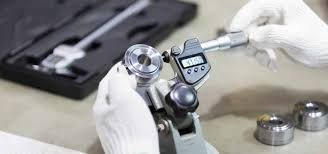How should out-of-calibration instruments and equipment be managed?

Managing out-of-calibration instruments and equipment is a critical process to ensure the accuracy and reliability of measurements in various industries. When equipment is out of calibration, it can lead to inaccurate readings, faulty results, and potential safety risks. Here’s a detailed explanation of how out-of-calibration instruments and equipment should be handled:
1. Identify the Issue
-
Routine Calibration Checks: Regular calibration checks are essential to detect when equipment drifts out of calibration. This should be part of your standard operating procedures (SOPs). If the equipment has a built-in calibration warning or automatic check system, ensure these alerts are acted upon immediately.
-
Manual Inspection: Technicians should be trained to identify signs of potential issues, such as erratic readings, inconsistencies, or deviation from expected values during use.
2. Stop Using the Equipment
-
As soon as it is identified that an instrument is out of calibration, it should be removed from service immediately to prevent any further use that could result in erroneous data or compromised results.
-
Inform all personnel who may have been using or relying on the instrument about the issue to avoid continued incorrect usage.
3. Document the Incident
-
Log the Issue: Record the equipment’s identification, the nature of the problem, when it was discovered, and who reported it. This documentation should also note the last known calibration date and the expected calibration schedule.
-
Traceability: Ensure that the issue is traceable in your quality management system to ensure all related processes are reviewed for potential impacts.
4. Assess the Impact
-
Evaluate Data Collected: Check whether the out-of-calibration status could have affected any measurements or results. If the equipment was in use recently, determine if any actions or decisions were based on inaccurate data.
-
Conduct a Risk Assessment: If there is any risk that out-of-calibration instruments may have affected product quality, safety, or compliance, perform an investigation. This may involve reviewing logs, re-checking results, or even conducting an audit.
5. Corrective Action
-
Calibration/Repair: Send the instrument for recalibration or repair as required. This process may involve sending the instrument to an authorized service provider, or internal calibration equipment may be used if it meets required standards.
-
Adjustments: After calibration, ensure that the equipment is functioning within specifications. If repairs were necessary, confirm that all components are restored to full functionality.
6. Verification After Calibration
-
After calibration or repair, the instrument should undergo verification checks to ensure that it now functions properly and that all its readings fall within acceptable limits. Depending on the type of equipment, this may involve checking against known standards or performing functional tests.
7. Recalibrate Regularly
-
Once the instrument has been recalibrated, establish a routine recalibration schedule to avoid future issues. Calibration frequency should depend on the usage of the instrument, its precision, and its operational environment. Instruments in high-use or harsh environments may require more frequent checks.
8. Implement Preventative Maintenance
-
Regular Servicing: Schedule periodic maintenance to inspect and test the equipment, even when it appears to be functioning correctly. Preventative measures can identify potential issues before they affect performance.
-
Training: Ensure personnel are well-trained in understanding the importance of calibration and the proper procedures for recognizing and reporting problems. Additionally, train staff on the equipment’s specific calibration requirements.
9. Compliance and Standards
-
Adhere to Regulations: Depending on the industry (such as pharmaceuticals, aerospace, or food manufacturing), calibration may be subject to regulatory standards like ISO, FDA, or other applicable bodies. Ensure compliance with these regulations during the handling and recalibration of equipment.
-
Record Keeping: Keep detailed records of calibration dates, inspections, and repairs for each piece of equipment. These records are often required for audits and are essential for maintaining quality standards.
10. Re-Integration into the System
-
Re-activate Equipment: Once the instrument is calibrated and verified, it can be put back into service. Ensure that any affected processes, systems, or production lines are reviewed and verified for accuracy.
-
Review Impact: If necessary, review production or data processes to determine if there is a need for any corrective actions due to the use of out-of-calibration equipment.
- 🎓 Discover one of the best Quality Assurance courses available — click below to explore the course that’s shaping future QA skills.
- https://trcjw.on-app.in/app/oc/306166/trcjw

